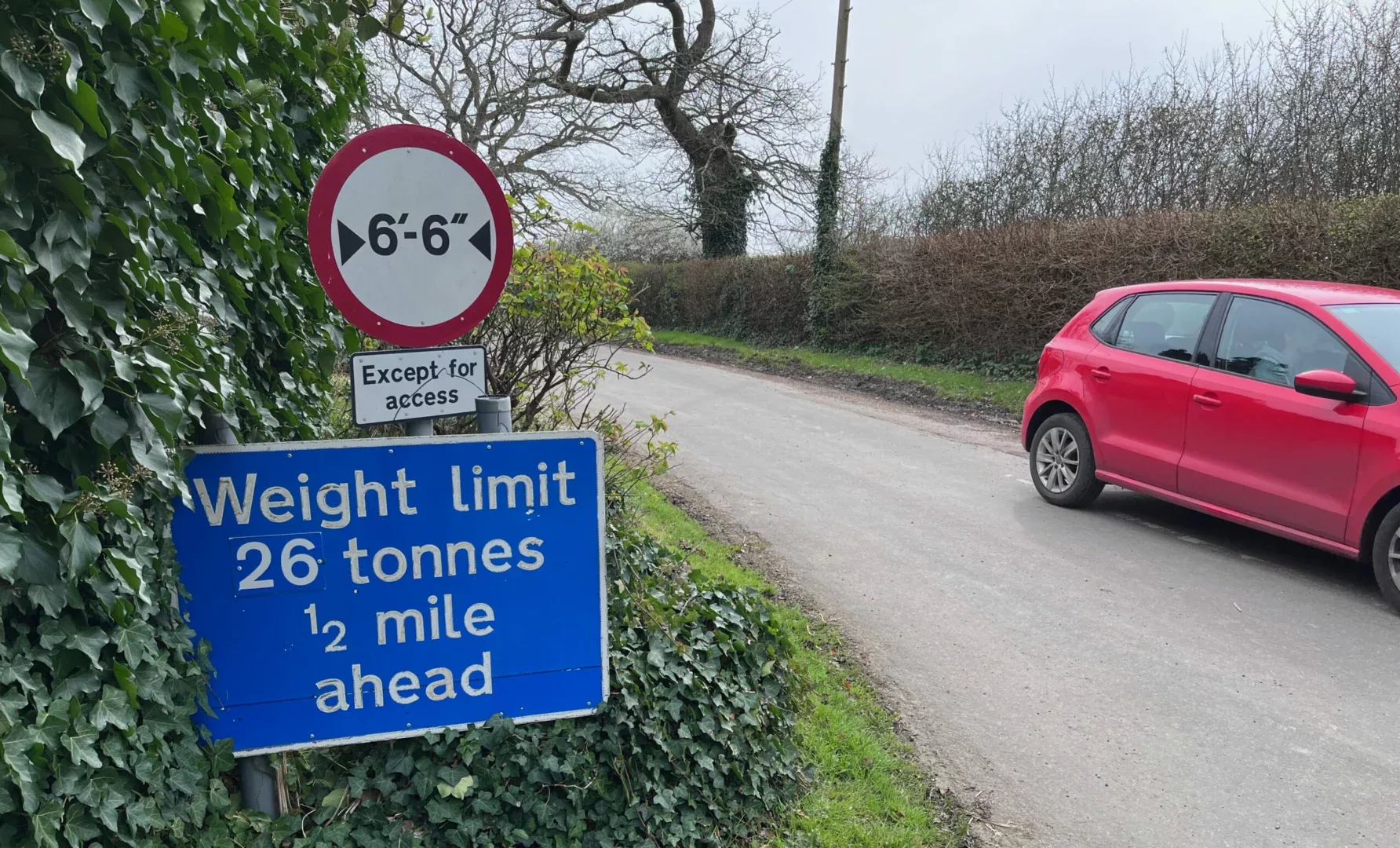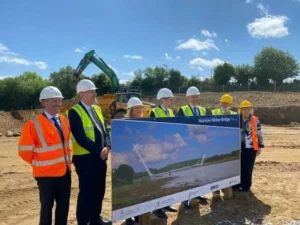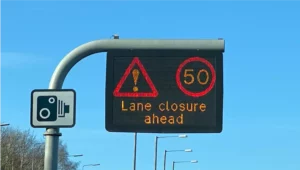One in every twenty-five council-maintained road bridges in Great Britain is officially deemed as substandard, according to research by the RAC Foundation.
In December 2023 the Foundation approached all 208 local highways authorities in England, Scotland and Wales, and based its analysis on Freedom of Information responses from 201 of them.
Between them, the 201 councils are responsible for 73,208 road bridges of which 2,928 are substandard, that is, they cannot carry the largest 44-tonne lorries allowed on the nation’s roads.
The 2,928 substandard bridges represent 4% of the total.
In last year’s survey 4.4% (3,174 bridges) of the 72,540 total – based on responses from 200 councils out of 207 – were classed as substandard.
A road bridge is officially defined as a “structure with a span of 1.5m or more providing public highway passage for motor vehicles over an obstacle such as a watercourse, railway, road or valley.”
Councils were also asked what specific issues concerned them most when it came to managing their bridge stocks. The responses could be broadly categorised as follows:
- Weather and climate change impacts
- Budgetary pressures
- Inflationary effects
- Staffing, including lack of trained personnel, recruitment and retention
- Skills outside of councils particularly among contractors and consultants
- Ageing infrastructure
- Specific issues relating to bridges under/over railways, or liaison with Network Rail
Increased concern about weather and climate impacts was particularly notable this year.
These worries included not just the impacts of heavier rainfall leading to things like flooding, washout and the increased scouring of submerged parts of a structure, but also ground shrinkage caused by hotter, drier weather.
Many bridges were built decades, if not centuries, ago and their designers could not have envisaged the type, size and volume of traffic seen today.
Between them, councils say they would ideally want to bring 1,955 (66.8%) of the 2,928 reported substandard bridges back up to full carrying capacity.
However, budget limitations mean they anticipate that only 292 (10%) of these will have the necessary work carried out on them within the next five years.
Based on responses from 122 councils (61% of the 201 total), it would cost £4.1 billion to clear the total backlog of maintenance work on the 45,796 bridges (63% of the 73,208 total) they manage between them.
Extrapolating from this figure, it can be estimated that the total outstanding value of the bridge maintenance workbank for highways authorities in Great Britain is around £6.8 billion.
The study was carried out with the help of the National Bridges Group of ADEPT (the Association of Directors of Environment, Economy, Planning & Transport).
The ten councils in Britain with the highest number of substandard bridges:
| Rank | Local Authority | Number ofbridges | Number of substandard bridges | Proportion of substandard bridges |
| 1 | Devon | 2,720 | 222 | 8% |
| 2 | Essex | 986 | 148 | 15% |
| 3 | Somerset | 1,469 | 128 | 9% |
| 4 | Suffolk | 1,287 | 119 | 9% |
| 5 | Cheshire East | 1,047 | 108 | 10% |
| 6 | Cornwall | 1,009 | 98 | 10% |
| 7 | Northumberland | 977 | 93 | 10% |
| 8 | Gloucestershire | 856 | 91 | 11% |
| 9 | Lancashire | 1,477 | 75 | 5% |
| 10 | Aberdeenshire | 1,345 | 74 | 6% |
The ten councils in Britain with the highest proportion of substandard bridges:
| Rank | Local Authority | Number ofbridges | Number of substandard bridges | Proportion of substandard bridges |
| 1 | Hammersmith and Fulham | 4 | 2 | 50% |
| 2 | Bristol | 140 | 52 | 37% |
| 3 | Waltham Forest | 51 | 17 | 33% |
| 4 | Kensington and Chelsea | 4 | 1 | 25% |
| 5 | Liverpool | 38 | 9 | 24% |
| 6 | Brent | 40 | 9 | 22% |
| 7 | Ealing | 15 | 3 | 20% |
| 8 | Conwy | 298 | 55 | 18% |
| 9 | North Tyneside | 73 | 13 | 18% |
| 10 | Wolverhampton | 58 | 10 | 17% |
(Full lists are available in the notes to editors below.)
The RAC Foundation also asked the three national highways authorities what the state of their bridges were:
| Local Authority | Number ofbridges | Number ofsubstandard bridges | Proportion ofsubstandard bridges |
| National Highways | 9,388 | 68 | 1% |
| Transport Scotland | 2,623 | 43 | 2% |
| Welsh Assembly | 1,267 | 102 | 8% |
Steve Gooding, director of the RAC Foundation, said:
“As ever, we are grateful to all the authorities who answered our questions.
“This data should not be used as a stick to beat highway authorities with but seen as a weathervane which indicates the way the highway condition wind is blowing.
“While on the one hand it looks like councils are holding their own in keeping their road networks functioning, with every year which passes we are seeing the challenge of maintaining climate resilience increase in the face of more extreme weather.
“It is unrealistic to think that there will be vastly more money added to the road and bridge maintenance pot but there are measures that could help stem the tide of decline, such as a real drive to recruit, train and retain engineers with the right expertise, plus the delivery of a fresh five-year funding settlement for local roads, which would at least allow highway teams to plan ahead.
“Ideally, faced with the long-term challenge of constrained funding and deteriorating weather we desperately need innovative engineering solutions to provide cheaper, more resilient repairs.
“The real danger lies in the change in climate – more temperature extremes and more wind, rain, snow and ice put are putting an ever-greater strain on the foundations of our roads and the structures that carry them.”
Keith Harwood, chair of ADEPT National Bridges Group, said:
“Our nation’s highway infrastructure represents centuries of investment, serving as the backbone of our economy and communities. However, as our bridges age and face mounting pressures from increased traffic and the impacts of climate change, maintaining their resilience becomes increasingly critical.
“The recent Grand Challenges statement from the Bridge Owners Forum underscores these issues, further emphasized by this year’s RAC Foundation report. Through insightful statistics, the report demonstrates the same themes – the financial constraints, staffing and skills shortages, and environmental factors confronting our aging infrastructure.“The ADEPT National Bridges Group extends its gratitude to the RAC Foundation for their ongoing dedication to compiling such valuable data, which highlights the evolving trends and concerns of Bridge Managers nationwide.”





















